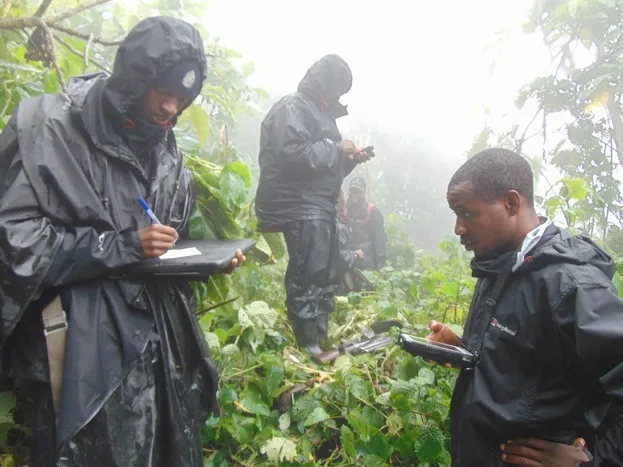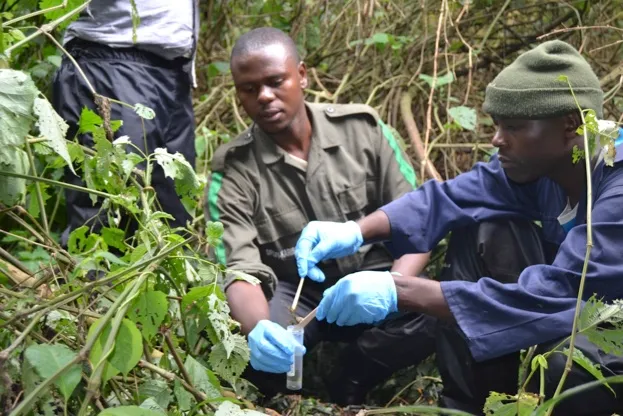A young mountain gorilla © Rand Lines / Dian Fossey Gorilla Fund
A new survey of the mountain gorillas in the Virunga Massif, an area covering the borders of Rwanda, the Democratic Republic of Congo and Uganda, has found an increase of 25 per cent from 480 in 2010 to 604.
Combined with the population of mountain gorillas in the Bwindi Impenetrable National Park in Uganda, this brings the total population of this critically endangered great ape to 1,004.
"When I first visited the mountain gorillas in 1979, the situation was dire; the number of these remarkable animals was dreadfully small," says Sir David Attenborough.
"It is incredibly heartening therefore to see how the efforts of so many different groups - communities, governments, NGOs - have paid off. The threats to mountain gorillas haven't disappeared entirely, of course, so now the challenge must be to ensure that these achievements are sustained long into the future."
The new survey was undertaken by the Greater Virunga Transboundary Collaboration, supported by the International Gorilla Conservation Programme (a coalition of international conservation organisations).

Trackers collecting data during the survey © Rand Lines / Dian Fossey Gorilla Fund
"The census work is a tough job - physically demanding, with 12 hours each day of walking through the forest, crossing big ravines and climbing mountains," says Emmanuel Munyembabazi, one of the trackers from the Dian Fossey Gorilla Fund involved in the census.
"But in addition to the conservation importance, it allowed the team members to increase their technical skills, such as collecting samples and using GPS, as well as to share and learn from staff from the three different countries and backgrounds. It was truly a collaborative effort!"
The census involved 60 people divided into teams, systematically walking through the gorillas' range, searching for gorilla trails and nests, and taking dung and hair samples.
In addition to contributing to the population count, the samples allowed for genetic identification of individual gorillas.

Trackers collecting gorilla dung during the survey © Rand Lines / Dian Fossey Gorilla Fund
"The rising numbers of mountain gorillas shows that the work of rangers, communities, government and NGOs is paying off, but this doesn't mean that we can relax efforts to protect these magnificent great apes," says Cath Lawson, regional manager for East Africa at WWF, which is part of the International Gorilla Conservation Programme.
"The animals are in a unique and fragile position, with very few left in just two isolated populations. With pressure growing on the mountain gorilla, it is essential that we use the survey findings to better protect the animals and local communities whose livelihoods depend on them."

The two populations of mountain gorilla are isolated from each other © Brent Stirton / WWF
Though there is an increase in the number of mountain gorillas, a number of threats still exist.
While undertaking the census, the survey teams destroyed more than 380 snares. Though originally set to catch antelopes, these snares can kill or harm gorillas. In fact, one of the snares found by the team did contain a dead mountain gorilla.
Other threats include climate change, infrastructure development and ongoing conflict and civil unrest.
The news of the gorilla population increase comes in the wake of the killing of six Virunga park rangers in an ambush in April 2018, and five rangers in an attack in August 2017.
The mountain gorilla (Gorilla beringei beringei) is a subspecies of the eastern gorilla. The other species is known as Grauer's gorilla (G. b. graeuri), formally known as the eastern lowland gorilla, and is more numerous with almost 4,000 individuals.
Gorillas are some of our closest relatives and they're fascinating creatures. Find out more about them by checking out our top 13 gorilla facts here:
